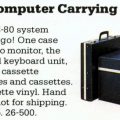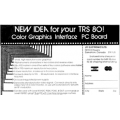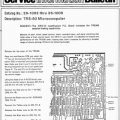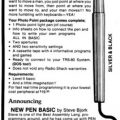The TRS-80 Telephone Interface
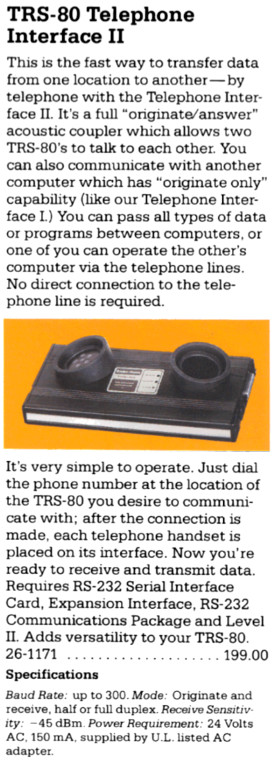
Catalog entry for the TRS-80 Telephone Interface II from a 1980 Radio Shack catalog
Data communications can materially expand your computing horizons. It means you can communicate with large “data base” computers, using your TRS-80 as an intelligent peripheral.
There were two versions of the Telephone Interface: the $149.00 Telephone Interface I (catalog number 26-1170) which was introduced in 1978 and the $199.00 Telephone Interface II (catalog number 26-1171) which replaced it in 1979.
Both modems also required an RS-232 serial port, a connector that a stock Model I didn’t include. The usual solution was Radio Shack’s $99.00 RS-232-C Serial Interface Board (catalog number 26-1145), which installed inside the Radio Shack Expansion Interface and provided the necessary serial port.
The Telephone Interface I
The Telephone Interface I connected to the telephone network using an indirect interface known as an acoustic coupler. To use the Telephone Interface I, the telephone handset was placed firmly into a “rubber cushion” on the Telephone Interface. A speaker and microphone underneath the cushion allowed the Telephone Interface I to communicate at speeds of up to 300 baud1. Although less efficient than a direct connection to a telephone line, it was more practical considering that many homes at the time had their telephones wired directly to the phone line.
The Telephone Interface I was described this way in a 1978 Radio Shack catalog:
Radio Shack’s Telephone Interface I lets the TRS-80 “talk” with other computer equipment over the phone! After the proper number has been reached, you simply place your telephone handset in the Interface’s cradle — without a single electrical connection to your telephone lines.
The main disadvantage of the Telephone Interface I was that it was an “originate-only” modem. This meant that it could initiate a telephone call to a remote system, but lacked the ability to receive a call. This limitation was recognized in the product introduction:
Telephone Interface I is an “originate only” unit, and two TRS-80’s so-equipped cannot communicate with each other. If this is your aim, be patient … we’ll have good news after the first of the year!
The Telephone Interface II
The Telephone Interface II was the “good news” mentioned and replaced the Telephone Interface I in early 1979. Unlike its predecessor, the Telephone Interface II was an “originate/answer” modem. This meant that a switch on the back of the unit changed between originate (able to place calls) and answer (able to receive calls) modes. Otherwise, the Telephone Interface II worked the same as the Telephone Interface I, although it was $50.00 more expensive.
Another new product introduced at the time was the Communications Software Package (catalog number 26-1146), also known as COMPAC. It was a $29.95 communications program which allowed the Telephone Interface II to “communicate with another TRS-80 as a host terminal combination.” According to the TRS-80 Microcomputer News:
COMPAC will permit your TRS-80 to act a remote terminal. In this mode, you may operate someone else’s TRS-80 (referred to as the “host” computer), in the same manner that you would if you were sitting at its keyboard. This is accomplished by running the program “TERM” in your computer. If you want your computer to be the “host,” then you would use the program “HOST” in COMPAC, and the other computer would use the “TERM” (terminal) program.
The Acoustic Coupler AC-3
In 1981, Radio Shack introduced the Direct Connect Modem (catalog number 26-1172), better known as the Modem I. Instead of the acoustic coupler used by the Telephone Interface II, the Modem I connected directly to the telephone lines using a modular telephone plug. Direct connect modems were capable of much faster speeds than acoustic coupler modems, and they soon became the standard type of computer modem.
In late 1982, the Telephone Interface II was replaced by the very similar $149.95 Acoustic Coupler AC-3 (catalog number 26-1174). The Acoustic Coupler AC-3 had nearly identical specifications to the Telephone Interface II but was no longer targeted just at the Model I (which had been discontinued two years earlier). The Acoustic Coupler AC-3 still had a top speed of 300 baud (which was pretty much the limit for acoustic couplers). In 1985, the Acoustic Coupler AC-3 was replaced by the $119.95 Acoustic Coupler AC-4 (catalog number 26-1179). Radio Shack sold the Acoustic Coupler AC-4 until at least 1988.
-
As a comparison, the FCC defined broadband in 2015 as 25 megabits per second downstream. This is very roughly 83,000 times faster than the 300 baud Telephone Interface I. ↩︎
